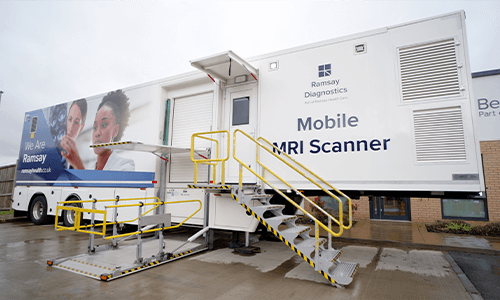Latest news and advice
Introducing Mr James Duncan, Our New Consultant Orthopaedic Surgeon
We are delighted to welcome Mr James Duncan, Consultant Orthopaedic Surgeon, to the Berkshire Independent Hospital team. Mr Duncan brings a wealth of knowledge and expertise with him after years of training abroad and in the UK.
Ramsay Health Care UK's Mobile Diagnostic Service Awarded The QSI Quality Mark
Following months of hard work from members of our mobile diagnostic team, RDUK, Ramsay's Mobile Diagnostic Unit, is proud to announce its award of the Quality Standard for Imaging (QSI) Quality Mark.
Ramsay Health Care Highly Commended at the HSJ Independent Healthcare Providers Awards 2025
Ramsay Health Care are proud to have been recognised as 'Highly Commended' for the Excellence in Clinical Innovation HSJ Independent Healthcare Providers Awards 2025! This is a great recognition of an outstanding dedication to support of the NHS and improvement in healthcare services.


